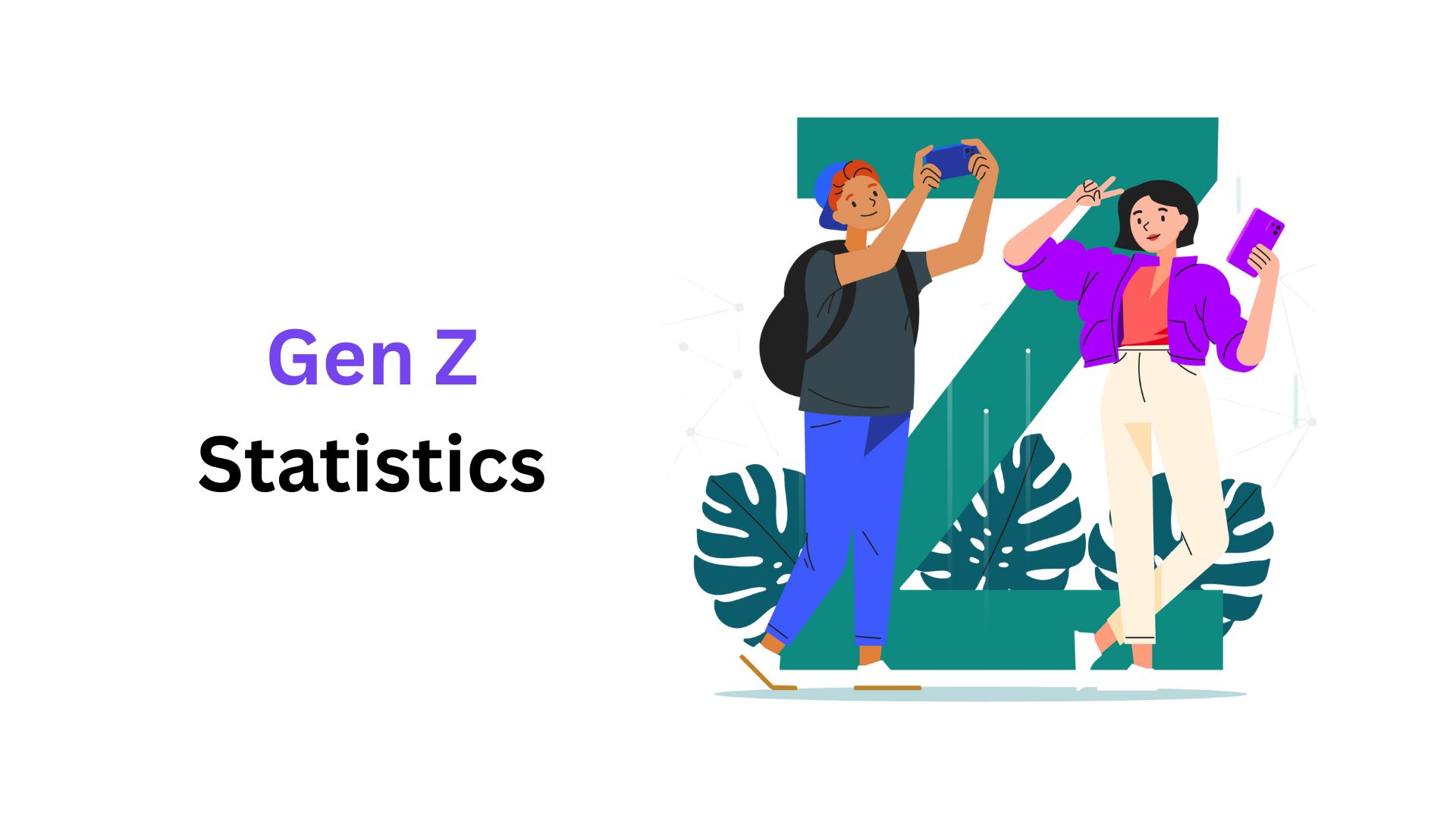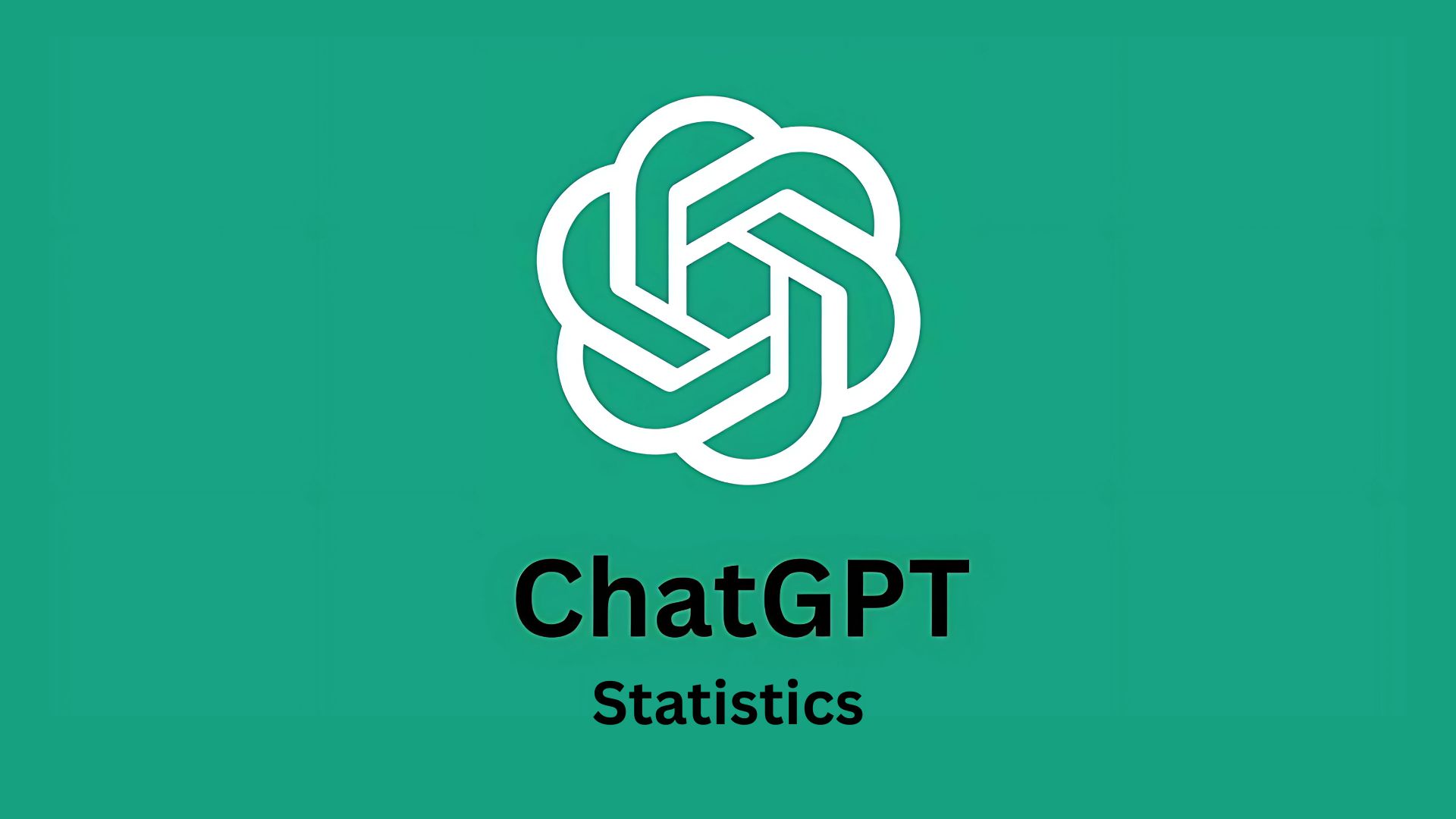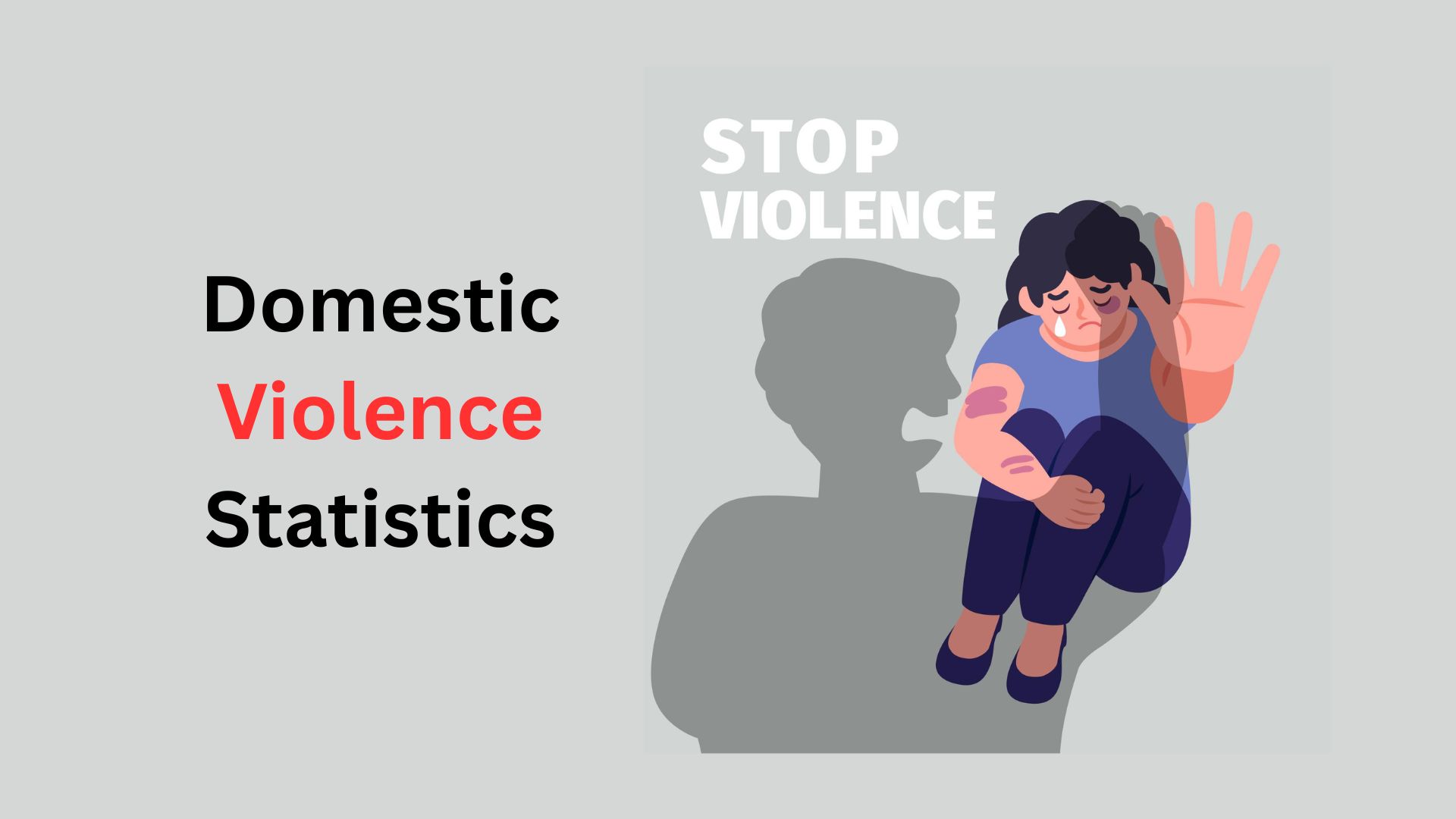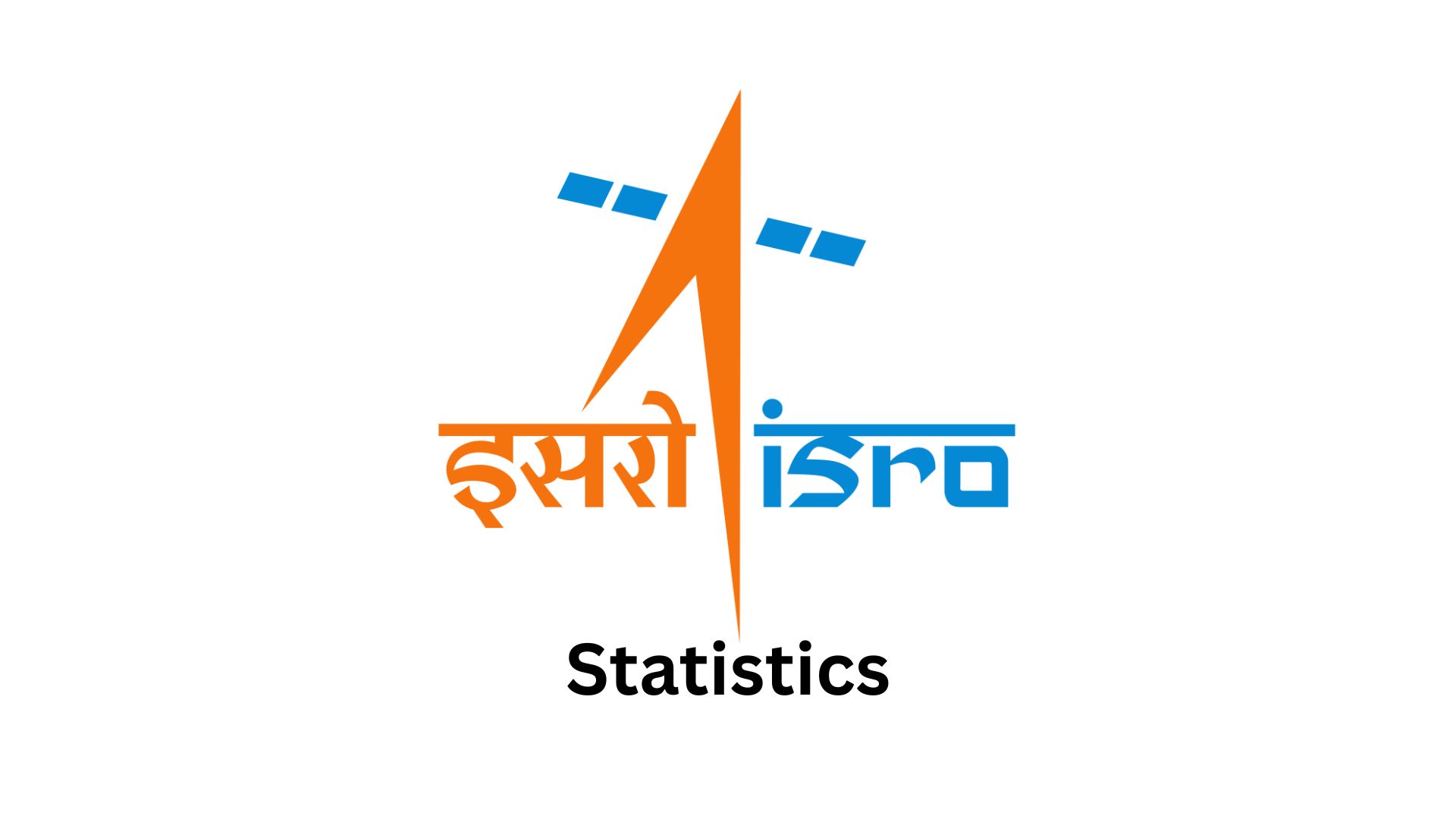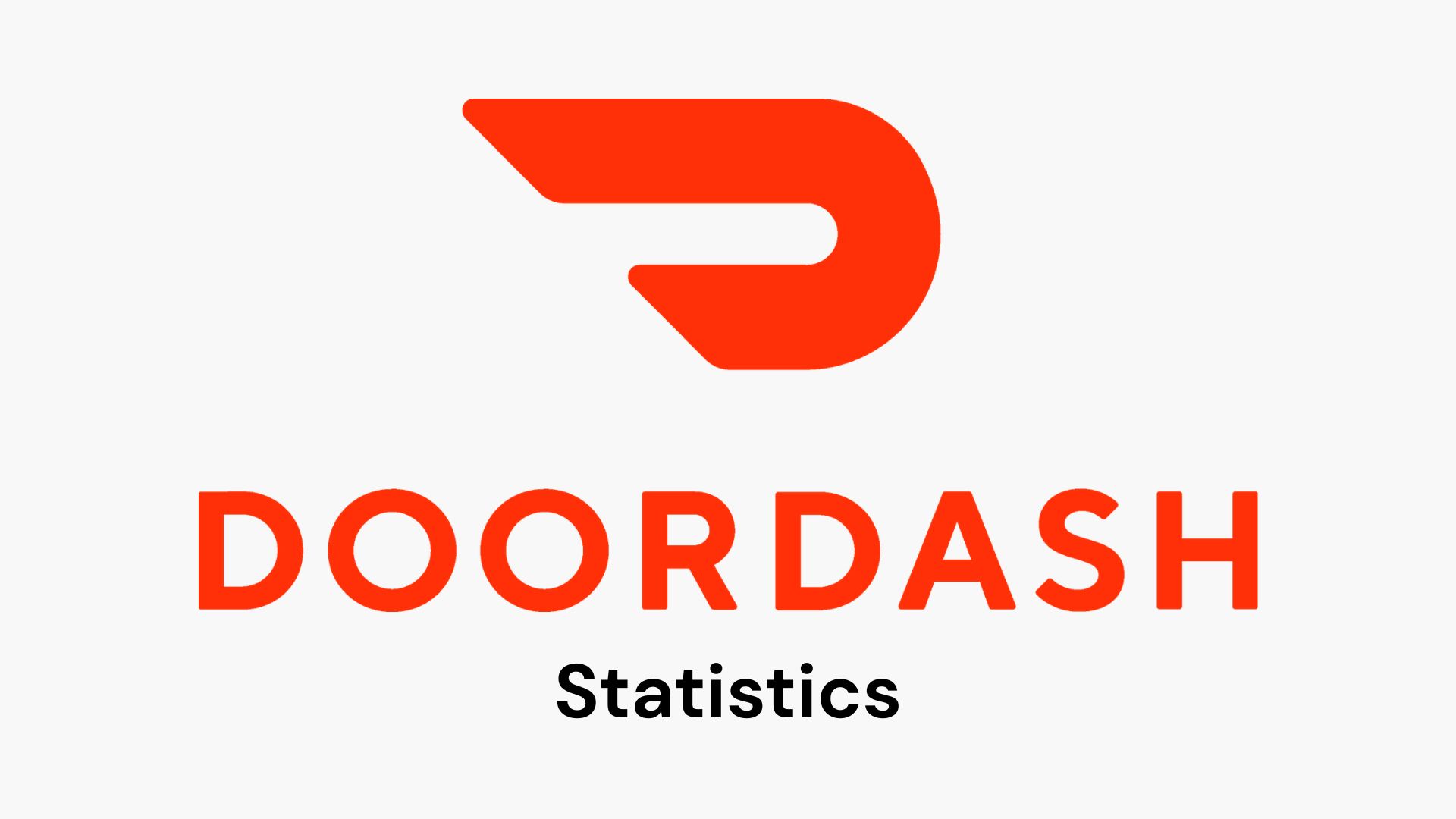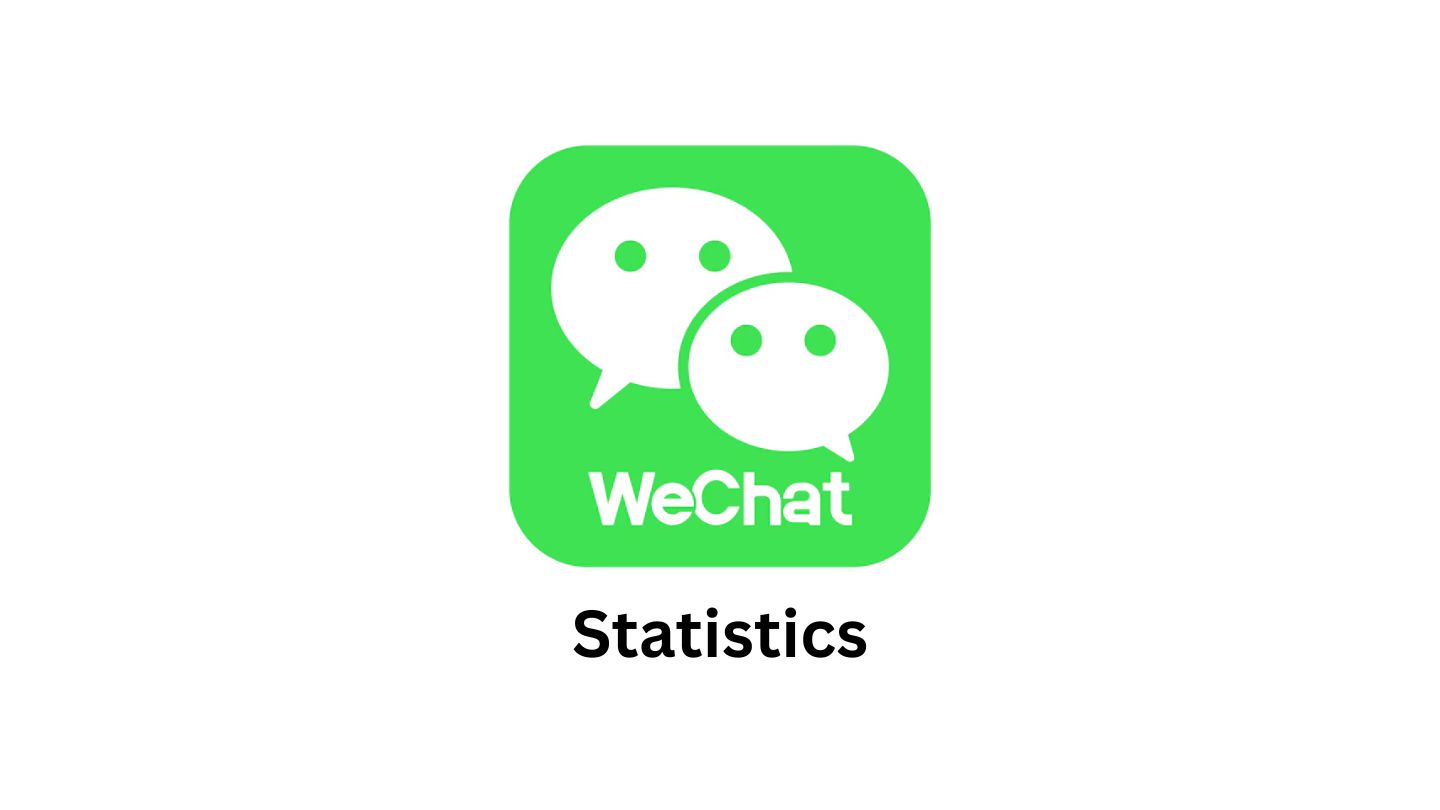LGBT Statistics By Country, Age, Sexuality and Facts
Updated · Jan 06, 2025
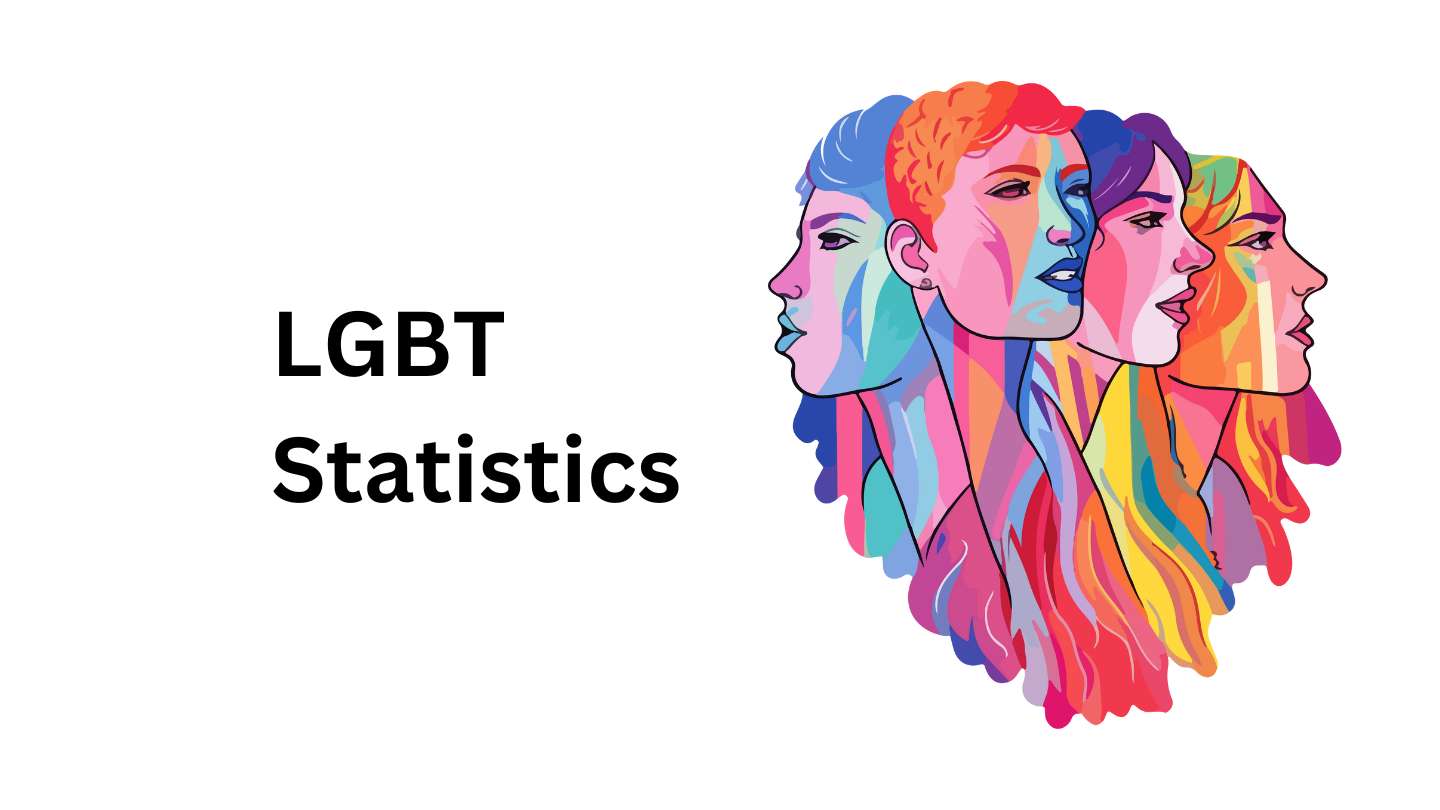
Table of Contents
- Introduction
- Editor’s Choice
- General LGBT Statistics
- Distribution of LGBT+ Identification Statistics
- LGBT Youth Statistics By Experienced Conversion Therapy and Attempted Suicide
- LGBTQ Youth’s Anxiety or Depression Statistics By Sexuality
- LGBT Stated Select Factors were Sources of Stress
- LGBT Statistics on Gay or Lesbian Relations
- Anxiety, Depression, Loneliness Among U.S. Adults By LGBT Identity
- U.S. Adults Experiencing Anxiety Symptoms By Age and LGBT Status, 2024
- U.S. Adults Depression Symptoms Statistics By Age and LGBT Status, 2024
- LGBT Identification Statistics By Country
- LGBT Statistics By Countries that Criminalise Homosexuality
- LGBT Marriage Statistics By Number of Countries
- LGBT Equality Score Statistics By U.S. States
- LGBT Characters Statistics By Broadcast Networks Statistics
- U.S. LGBT Population Statistics By Transgender Status
- LGBT Statistics on Mental Health
- LGBT Parenting Statistics
- Demand Influencing Factors for LGBT
- Conclusion
Introduction
LGBT Statistics: LGBT stands for Lesbian, Gay, Bisexual, and Transgender. These are terms used to describe people’s sexual orientation or gender identity. Being part of the LGBT community means you may love someone of the same gender, feel attracted to people of different genders, or identify with a gender different from the one you were born with. Everyone deserves respect, no matter who they are or who they love. Over time, society has worked hard to support LGBT rights, but challenges remain.
This article discusses the importance of understanding, acceptance, and equal rights for everyone. Learning about LGBT helps us build a world where everyone feels safe and valued.
Editor’s Choice
- LGBT Statistics states that approximately 7.6% of adults in the United States identify as LGBTQ+, with 22.3% of Generation Z adults identifying as such.
- Meanwhile, in Scotland, nearly half (46.1%) of transgender individuals are aged between 16 and 24.
- The LGBT+ legal equality index measures the current legal status of many different issues, such as the legal status of homosexuality, same-sex marriage, transgender rights, LGBT discrimination protections, LGBT censorship laws, etc.
- Malta has maintained the top position in the Rainbow Map ranking for LGBTI rights in Europe for the last nine years.
- As of 2024, Studies indicate that LGBTQ+ youth are at a higher risk of suicide attempts compared to their heterosexual peers.
- In the United Kingdom, seven in ten LGBT pupils report that their school states homophobic and biphobic bullying is wrong, but only two in five report the same for transphobic bullying.
- LGBT Statistics further show that over 1.6 million adults and youth identify as transgender in the U.S., with 1.4% of youth aged 13 to 17 identifying as transgender.
- Americans estimate that 23.2% of the population is gay, though the actual figure is around 7.6%.
- In the U.S., 83% of lesbian, gay, and bisexual individuals identify with the Democratic Party, while 17% align with the Republican Party.
- South Korea has the lowest share of people identifying as LGBT among 43 countries, at only 3%.
General LGBT Statistics
- As of 2024, the unemployment rate for LGBTQ+ adults is 10.5%, higher than the national rate of 6.2%.
- In the past year, 40% of LGBTQ+ youth have thought about suicide, rising to over 50% for transgender and nonbinary youth.
- Over 1,000 openly LGBTQ+ officials currently serve in various roles across the U.S.
- Among non-religious Americans, 79% support same-sex marriage, and 74% of Millennials also agree.
- LGBTQ+ youth are 120% more likely to face homelessness than their non-LGBTQ+ peers.
- Same-sex marriage is legal in 29 countries worldwide, starting with the Netherlands in 2000.
- Around 22% of LGBTQ+ adults in the U.S. live in poverty, compared to 16% of non-LGBTQ+ adults.
- In the U.S., the median income of same-sex married couples is USD 107,210, higher than USD 96,932 for opposite-sex couples.
- About 29% of LGBTQ+ people have faced workplace discrimination, affecting their income and career growth.
Distribution of LGBT+ Identification Statistics
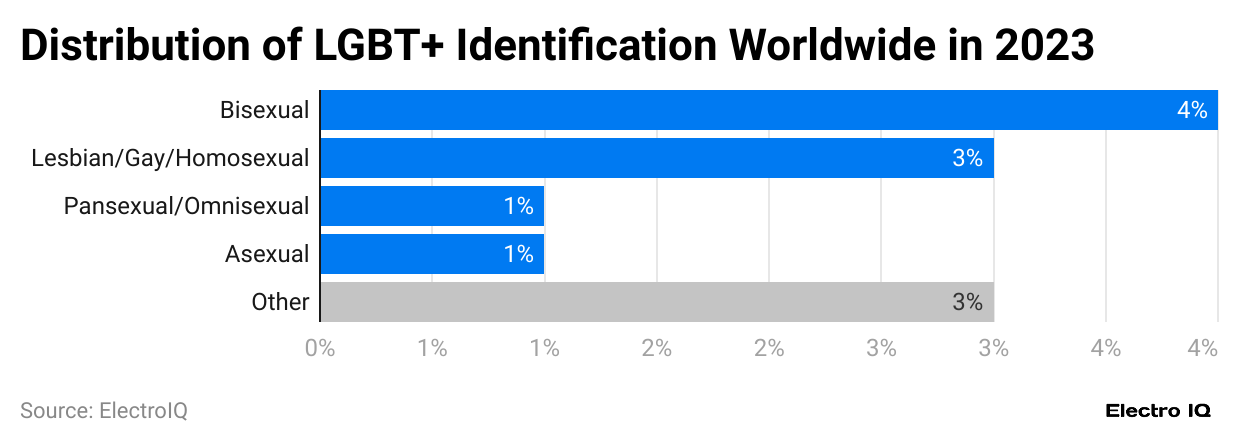
(Reference: statista.com)
- In 2023, a global survey found that around 4% identified as bisexual across 30 countries.
- Moreover, 3% identified as gay/lesbian or homosexual, followed by 1% of people interviewed who identified themselves as pansexual or omnisexual, meaning they are attracted to all genders, and another 1% (asexual).
- Lastly, other LGBT individuals captured a share of 3% together.
LGBT Youth Statistics By Experienced Conversion Therapy and Attempted Suicide
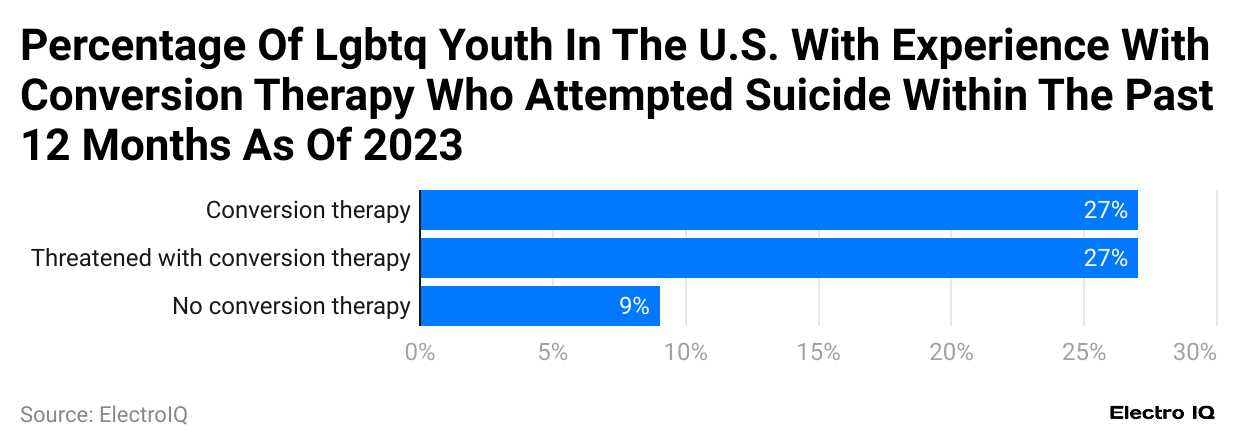
(Reference: statista.com)
- As mentioned in LGBT Statistics, about 27% of LGBTQ youth in the U.S. who experienced conversion therapy attempted suicide in the past year.
- In comparison, 27% of LGBTQ youth who were threatened with conversion therapy attempted suicide, while only 9% of those with no experience of conversion therapy did the same.
LGBTQ Youth’s Anxiety or Depression Statistics By Sexuality
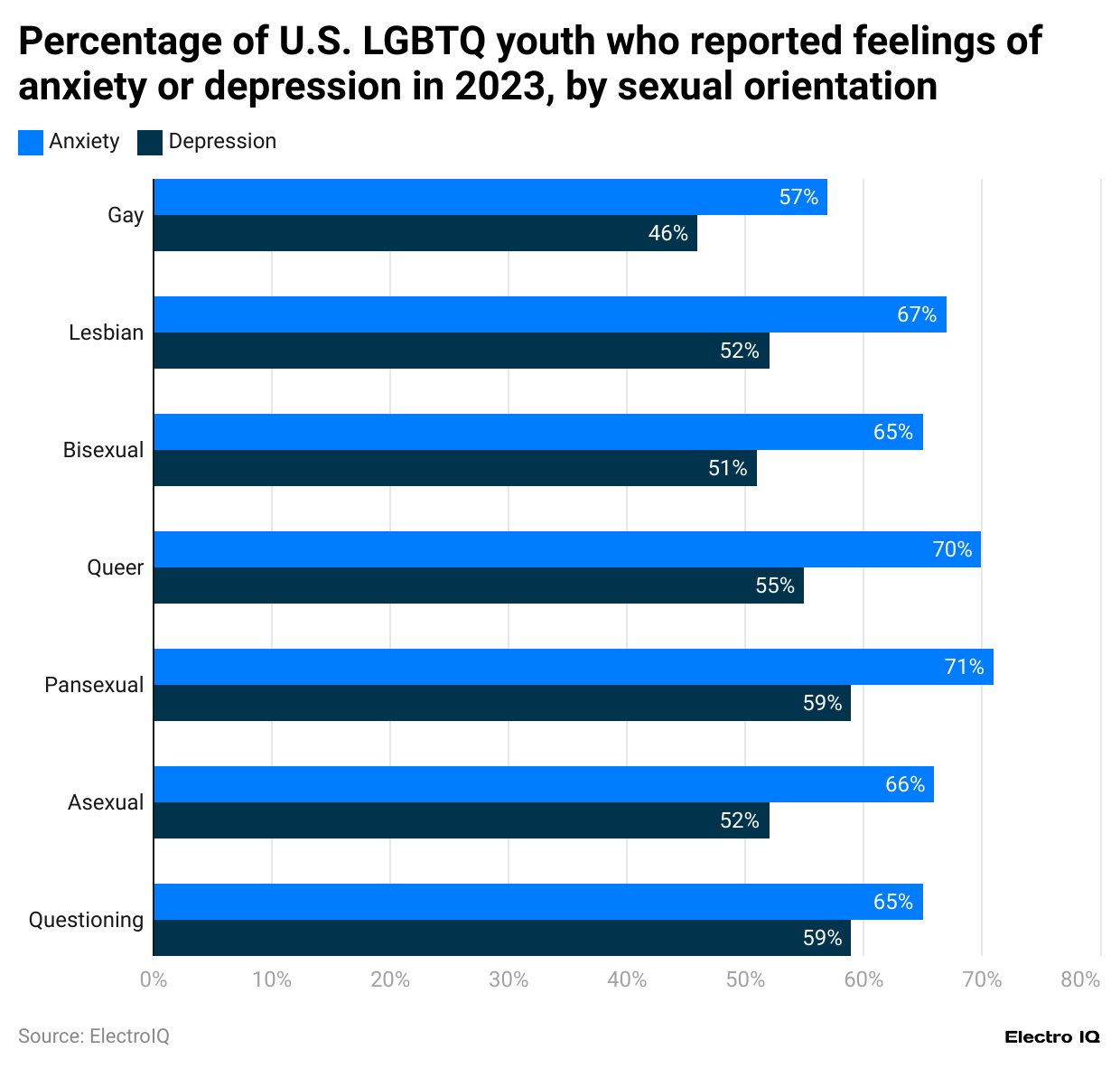
(Reference: statista.com)
- A Statista report shows that about 57% of gay youth in the U.S., aged 13 to 24, experienced anxiety, and 46% reported dealing with depression.
Additionally, a portion of U.S. LGBTQ youth said their sexual orientation caused them to feel anxiety or depression, as detailed below:
| Sexual orientation | Anxiety | Depression |
| Lesbian | 67% |
52% |
|
Bisexual |
65% | 51% |
| Queer | 70% |
55% |
|
Pansexual |
71% | 59% |
| Asexual | 66% |
52% |
|
Questioning |
65% |
59% |
By Race and Ethnicity
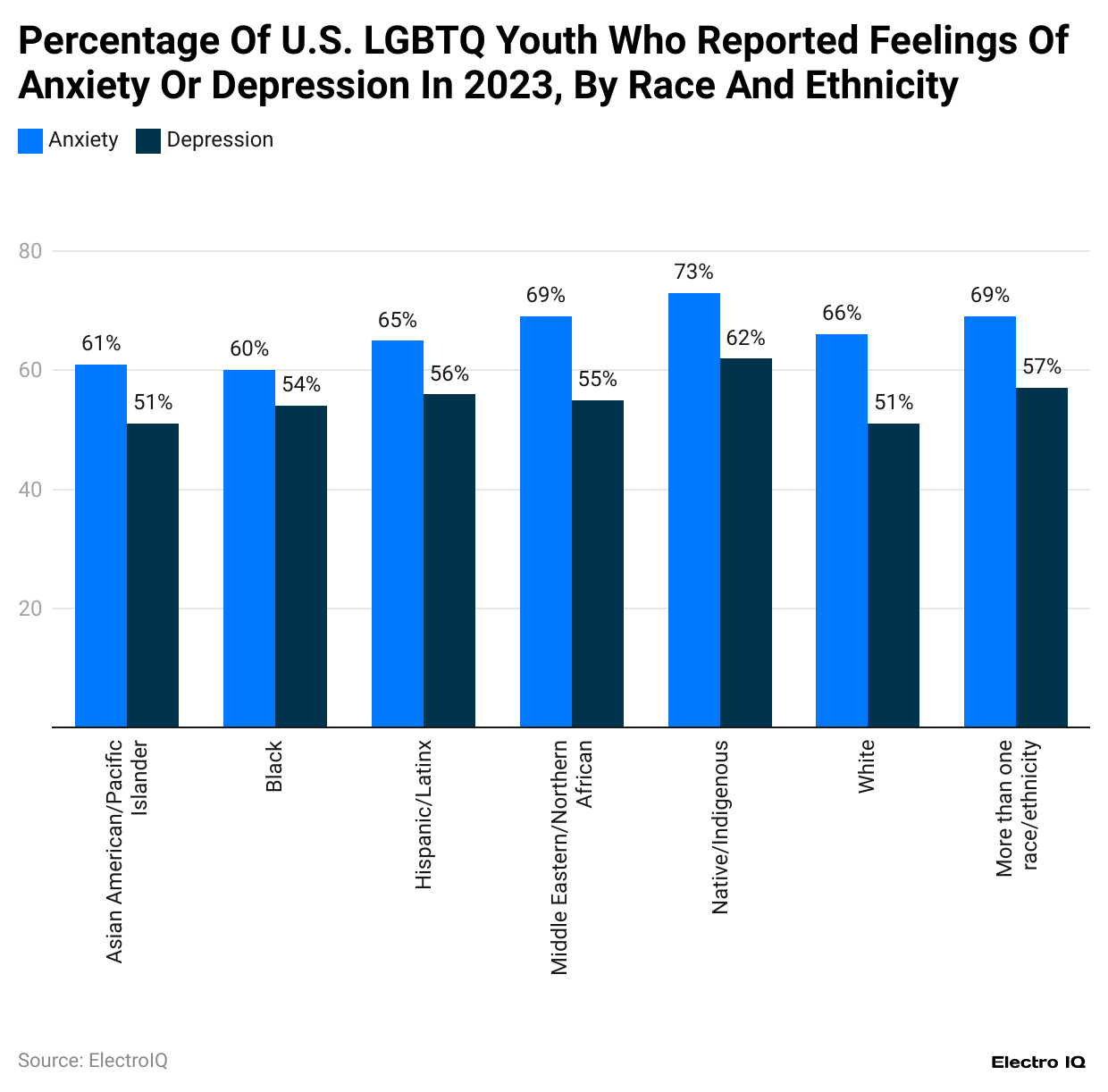
(Reference: statista.com)
- LGBT Statistics also show that about 61% of Asian American and Pacific Islander LGBTQ youth aged 13 to 24 said they felt anxious, and 51% reported feeling depressed.
| Gender Identity | Anxiety | Depression |
| Black | 60% | 54% |
| Hispanic/Latinx | 65% | 56% |
| Middle Eastern/Northern African | 69% | 55% |
| Native/Indigenous | 73% | 62% |
| White | 66% | 51% |
| More than one race/ethnicity | 69% | 57% |
LGBT Stated Select Factors were Sources of Stress
- LGBT Statistics also show that around 45% of LGBT adults said personal finances caused them a lot of stress, compared to 35% of non-LGBT adults.
- Health problems stressed about 40% of LGBT adults, while only 28% of non-LGBT adults felt the same.
- For 55% of LGBT adults, this was a big stress factor, but only 20% of non-LGBT adults saw it as significant.
LGBT Statistics on Gay or Lesbian Relations
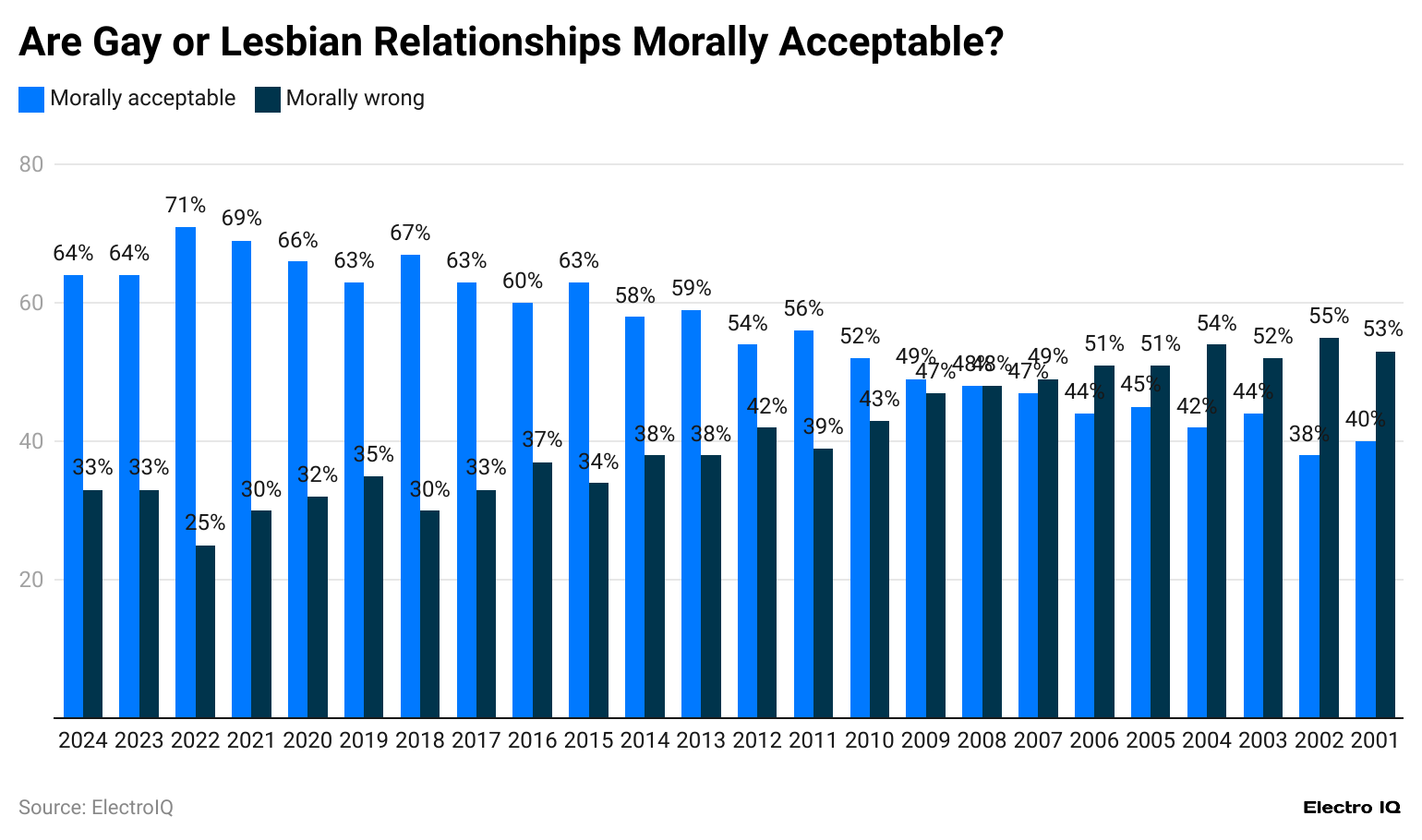
(Reference: statista.com)
- In 2001, 53% of people said they thought gay or lesbian relationships were morally wrong.
- By 2023, about 33% still believed they were morally wrong, and this percentage stayed the same in 2024.
- At the same time, 64% said they found these relationships morally acceptable.
Anxiety, Depression, Loneliness Among U.S. Adults By LGBT Identity
- In 2024, 61% of LGBT adults said they experienced anxiety, compared to 35% of non-LGBT adults.
- Half of LGBT adults reported depression, while only 29% of non-LGBT adults felt the same.
- A survey showed that 42% of LGBT adults often felt lonely, compared to 23% of non-LGBT adults.
U.S. Adults Experiencing Anxiety Symptoms By Age and LGBT Status, 2024
| Age Group (year) | LGBT adults | Non-LGBT adults |
| 18 to 29 | 61% | 35% |
| 30 to 64 | 45% | 25% |
| 65 and older | 19% | 14% |
U.S. Adults Depression Symptoms Statistics By Age and LGBT Status, 2024
| Age Group (year) | LGBT adults | Non-LGBT adults |
| 18 to 29 | 50% | 29% |
| 30 to 44 | 40% | 25% |
| 45 to 64 | 30% | 20% |
| 65 and older | 16% | 11% |
LGBT Identification Statistics By Country
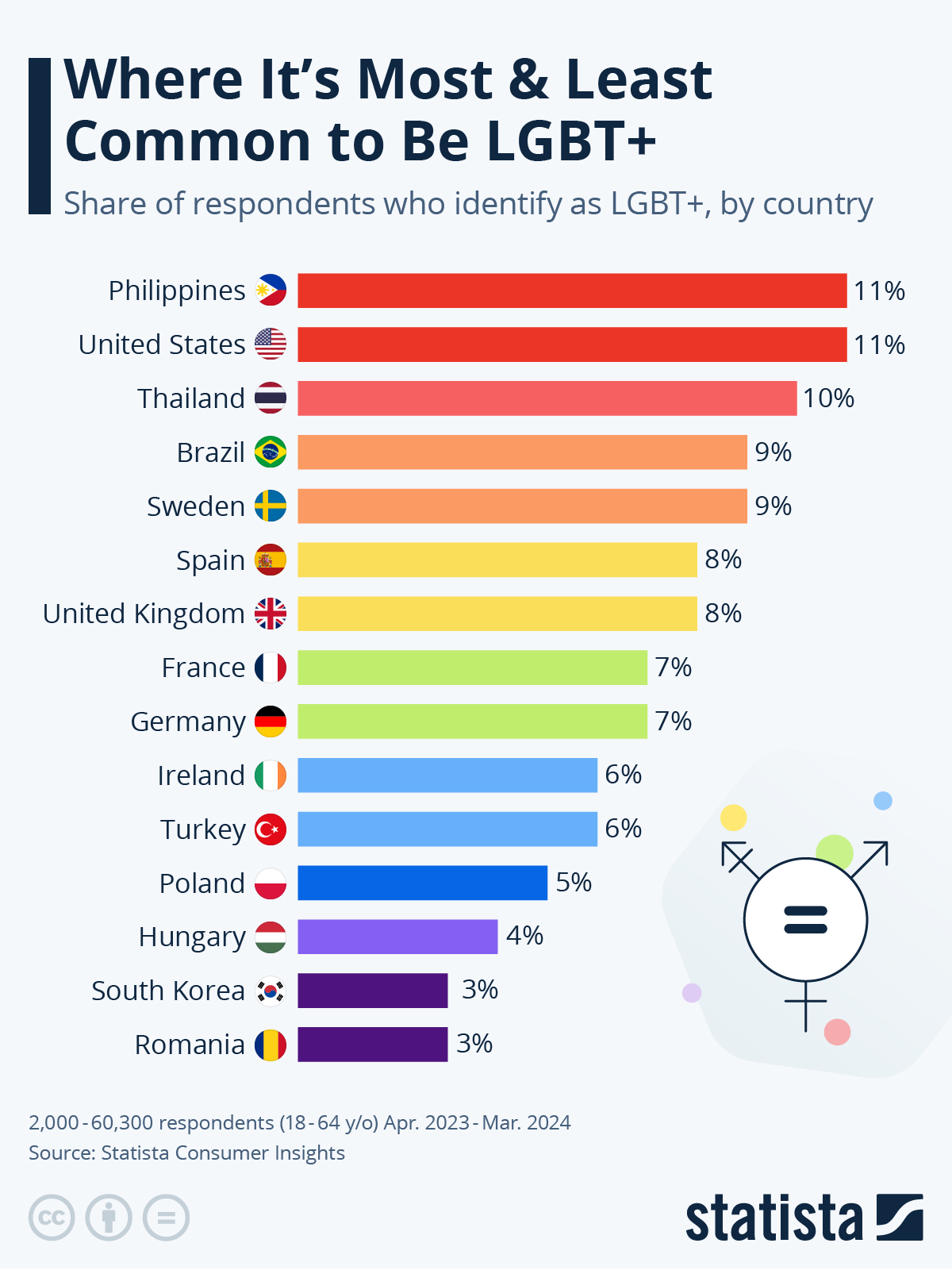
(Source: statcdn.com)
- In 2024, the highest percentage of people identifying as LGBT+ is 11% in the Philippines, the United States, and Israel.
- Thailand and Canada follow closely with 10%, while Sweden, Brazil, and Australia each have 9%.
- Meanwhile, LGBT statistics show that Spain and the United Kingdom captured a share of 8% each.
- Other countries LGBT shares are followed by France (7%), Germany (7%), Ireland (6%), Turkey (6%), Poland (5%), Hungary (4%), South Korea (3%) and Romania (3%).
LGBT Statistics By Countries that Criminalise Homosexuality
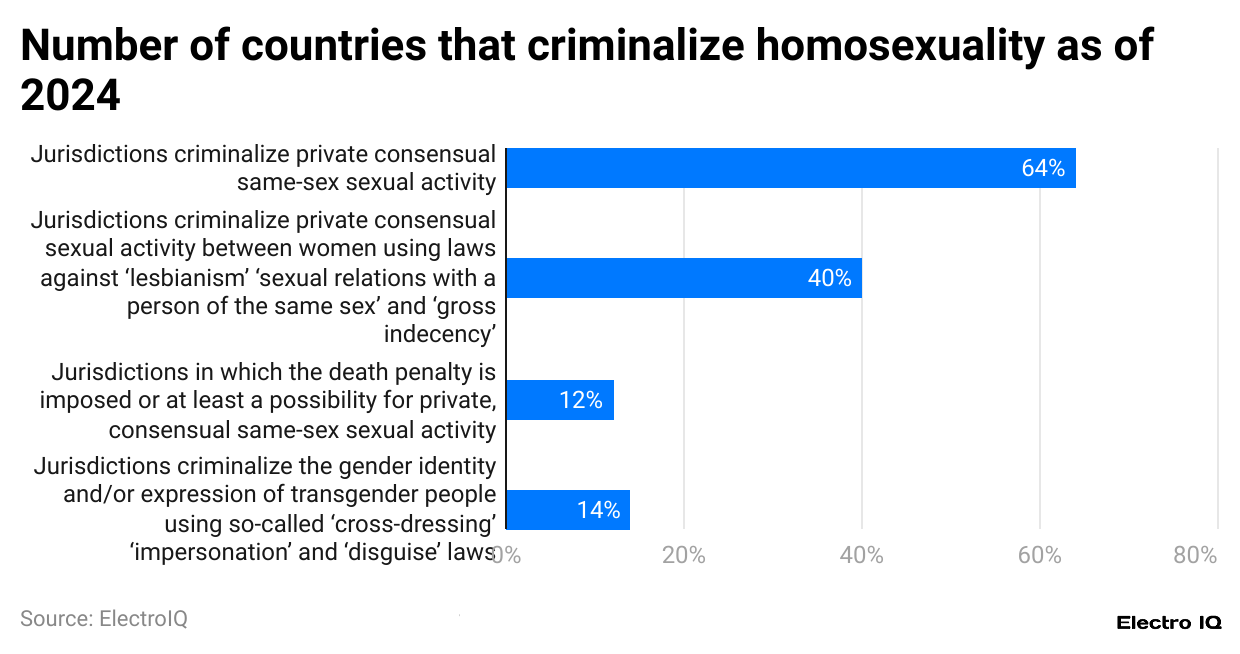
(Reference: statista.com)
- In 2024, homosexuality is still illegal in 64 countries, mainly in the Middle East, Africa, and Asia.
- Over 40 countries criminalize consensual sexual activity between women, targeting lesbian relationships and same-sex conduct.
- In 12 countries, same-sex relations can lead to the death penalty.
- Additionally, 14 countries penalize transgender people for their gender identity through laws against “cross-dressing” or “impersonation.”
LGBT Marriage Statistics By Number of Countries
- As of 2024, 37 countries have legalized same-sex marriage.
- In Europe, 18 countries, including the Netherlands, Spain, Norway, Sweden, Portugal, Iceland, Denmark, France, the UK, Luxembourg, Ireland, Finland, Malta, Germany, Austria, and Switzerland, allow same-sex marriage.
- In the Americas, 13 countries have legalized it, such as Canada, the United States, Argentina, Brazil, Colombia, Uruguay, Ecuador, Costa Rica, and Chile.
- In Asia, only Taiwan has made same-sex marriage legal.
- In Oceania, it is legal in two countries: New Zealand and Australia.
- South Africa is the only country in Africa where same-sex marriage is recognized.
LGBT Equality Score Statistics By U.S. States
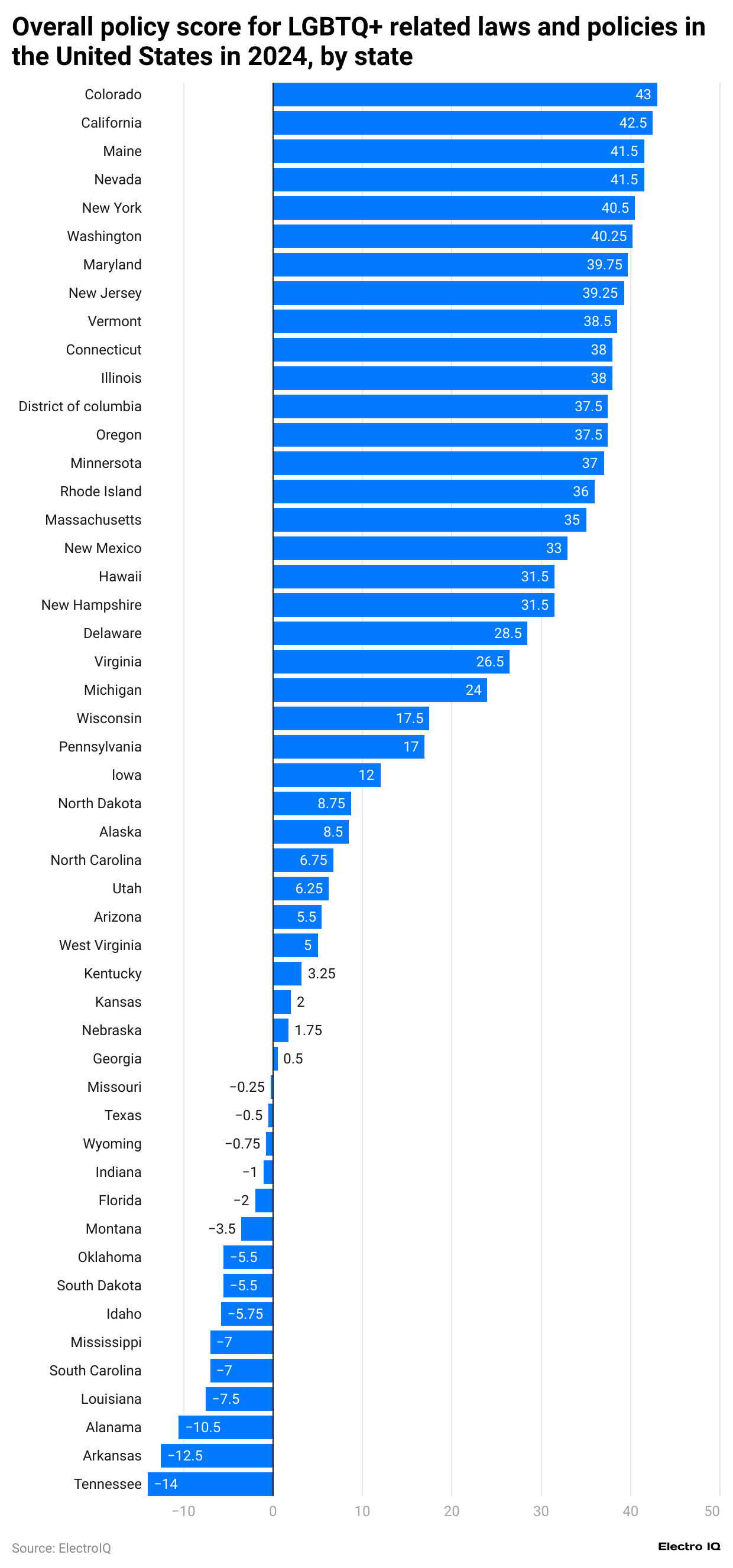
(Reference: statista.com)
- As per LGBT Statistics, in 2024, Colorado and California scored the highest, with 43 and 42.5 points, in seven key policy areas, including parental recognition, non-discrimination, and health care.
- Other states with high LGBTQ+ Equality Scores are Maine and Nevada (41.5 each), New York (40.5), Washington (39.75), New Jersey (39.25), Vermont (38.5), Connecticut (38), Illinois (38), the District of Columbia (38), and Oregon (37.5).
LGBT Characters Statistics By Broadcast Networks Statistics
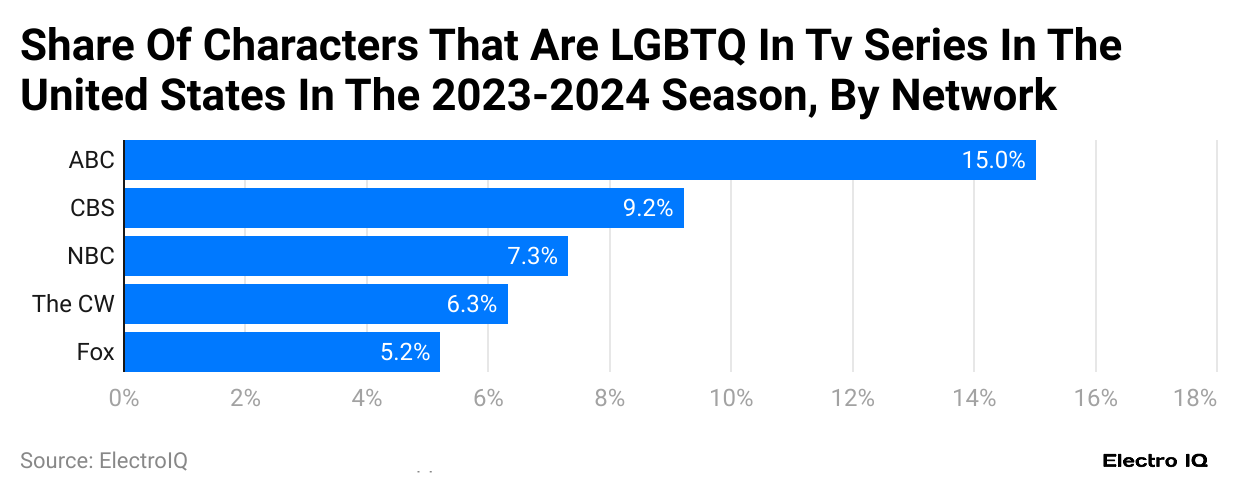
(Reference: statista.com)
- In the United States, from 2023 to 2024, during the TV season, 15% of regular characters on ABC were LGBT.
- CBS had 9.2% of its regular characters identified as LGBT.
- NBC had the lowest representation, with only 7.3% of regular characters being LGBT, followed by The CW at 6.3% and Fox at 5.2%.
By Streaming Providers
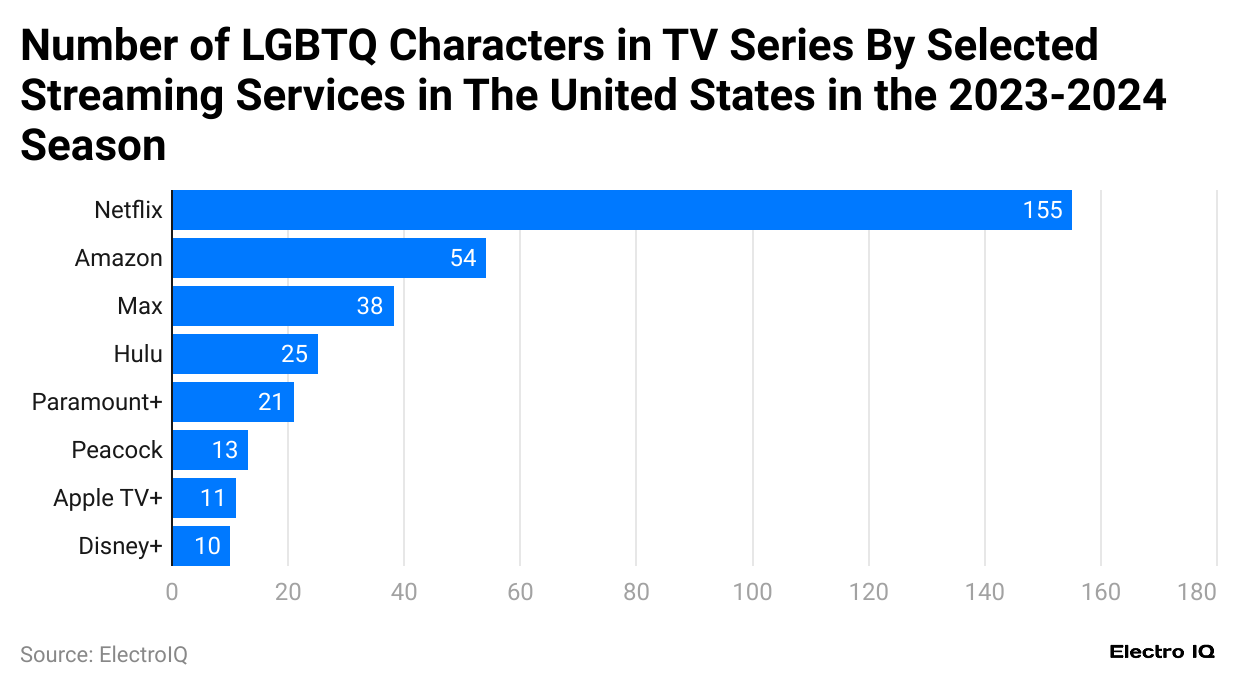
(Reference: statista.com)
- According to LGBT Statistics, in 2024, Netflix had the most LGBTQ characters in its TV series, with 155, while Amazon featured 54.
- Other streaming services in the U.S. included LGBTQ characters: Max (38), Hulu (25), Paramount+ (21), Peacock (13), Apple TV+ (11), and Disney (10).
By Sexual Orientation
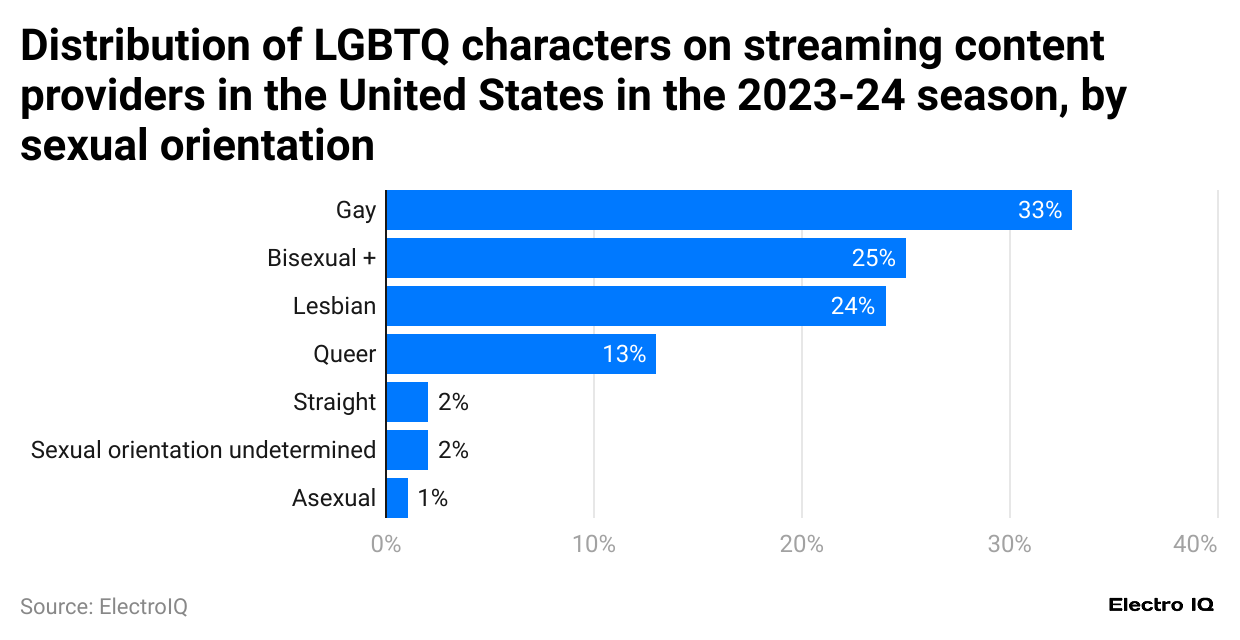
(Reference: statista.com)
- As mentioned in the LGBT Statistics (2023 to 24) streaming season, almost 33% of American characters on streaming platforms were gay, 24% were lesbian, and 25% were bisexual.
- LGBTQ character distribution on streaming platforms includes 24% lesbian, 13% queer, 2% straight, 2% with undetermined orientation, and 1% asexual.
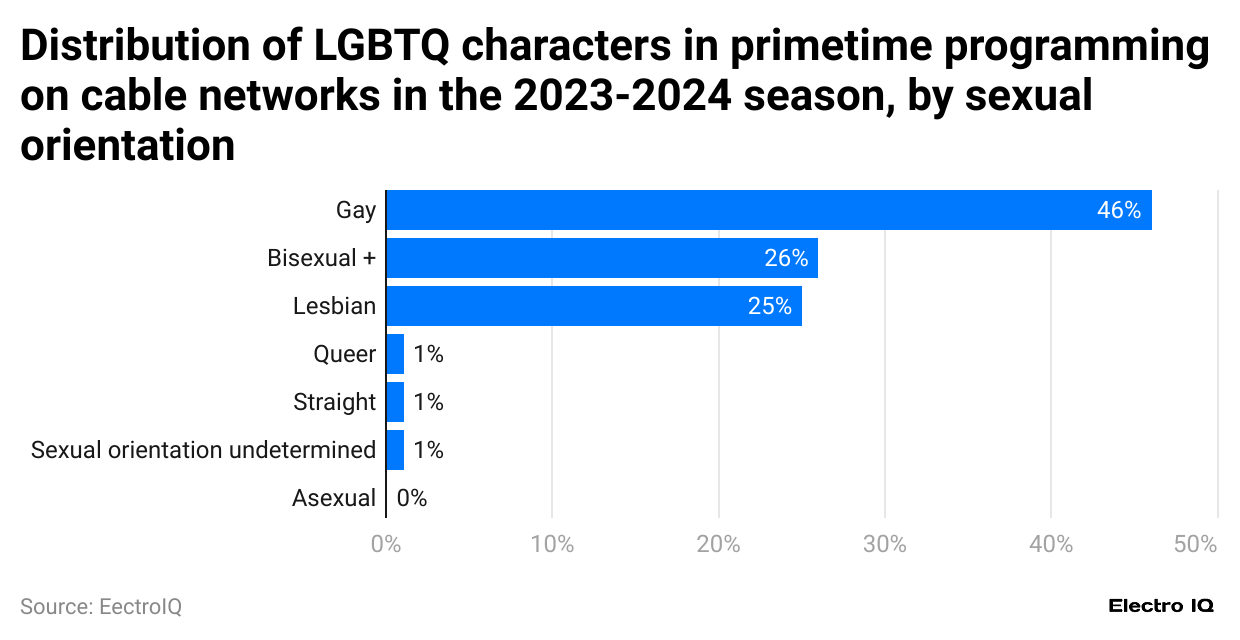
(Reference: statista.com)
- In 2024, 46% of LGBTQ characters in U.S. primetime cable shows were portrayed as gay.
- Other characters included 26% bisexual, 25% lesbian, 1% queer, 1% straight, and 1% with an unspecified sexual orientation.
U.S. LGBT Population Statistics By Transgender Status
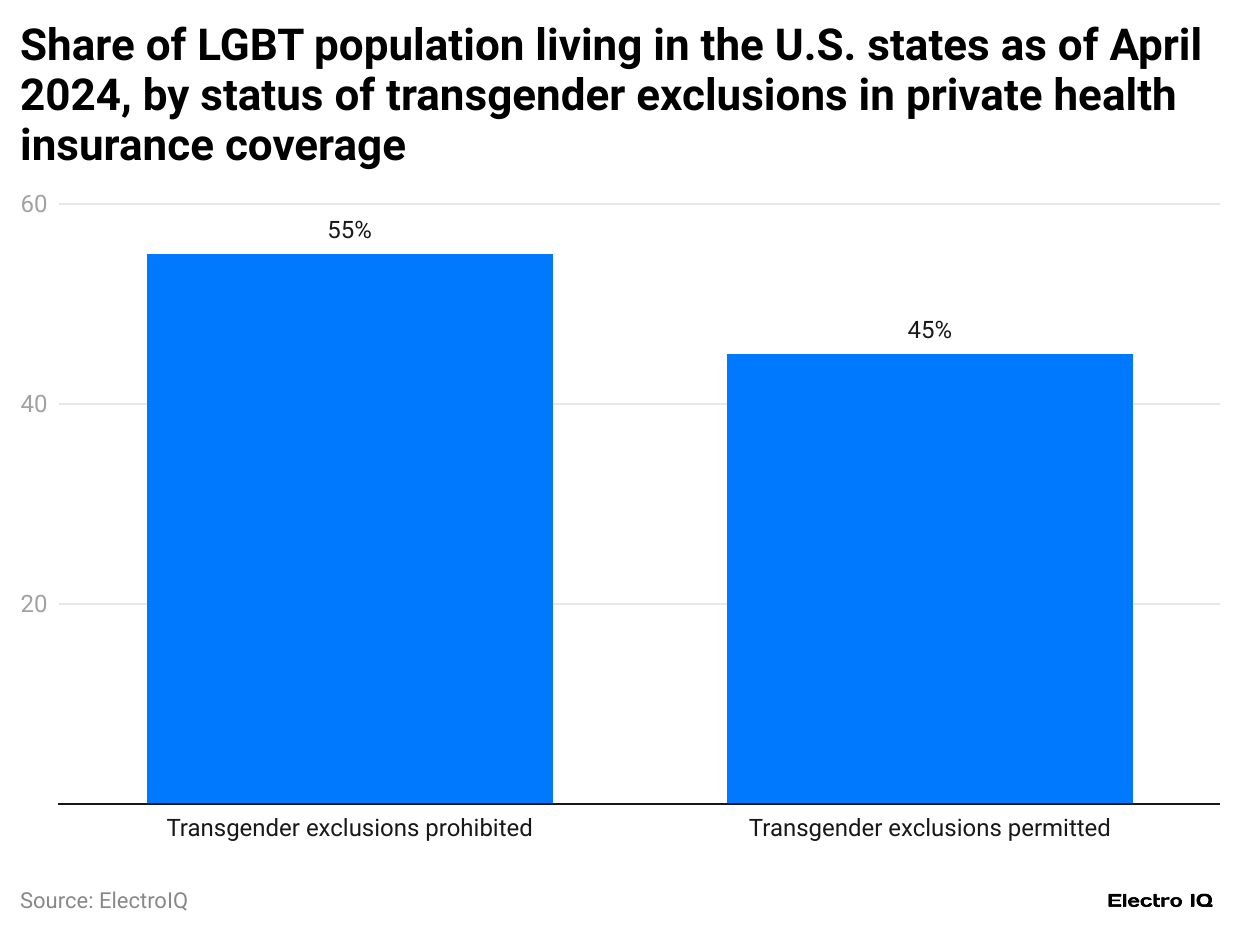
(Reference: statista.com)
- LGBT Statistics further state that 55% of LGBTQ+ individuals lived in U.S. states and D.C., where private health insurers couldn’t deny transgender-related care like sex reassignment surgery.
- Only 40% lived in states protecting sexual orientation and gender identity.
LGBT Statistics on Mental Health
- In the past year, 39% of LGBTQ+ youth thought about suicide, with the number rising to 46% for transgender and nonbinary youth.
- About 12% of LGBTQ+ youth attempted suicide during the same time.
- While 84% of LGBTQ+ youth needed mental health support, 50% couldn’t get the help they needed.
- Nearly 49% of LGBTQ+ teens aged 13 to 17 faced bullying in the last year.
- Among transgender and nonbinary youth, 13% were on gender-affirming hormones, but 61% worried about losing access to this treatment.
LGBT Parenting Statistics
- As of 2024, about 18% of LGBTQ adults in the U.S., roughly 2.57 million people, will be raising children.
- Parenthood is reported by 26% of cisgender women and 20% of transgender men, compared to 8% of cisgender men and 12% of transgender women.
- As per LGBT Statistics, nearly 35% (1.24 million) of married LGBTQ adults are raising children.
- Among same-sex couples, 14% (167,000 couples) are parents, and 18% (119,000) of married same-sex couples have children.
- Globally, 5 million children are raised by LGBTQ parents, according to LGBTQ statistics.
- Out of these, 2 million children live with single LGBTQ parents, while same-sex couples care for 300,000 children.
Demand Influencing Factors for LGBT
- The legal status of LGBTQ+ rights, such as marriage equality and anti-discrimination laws, directly impacts the demand for accurate statistics.
- Higher societal acceptance leads to more individuals openly identifying as LGBTQ+.
- Governments and organizations require accurate LGBTQ+ statistics to formulate inclusive policies, allocate resources effectively, and address the community’s specific needs.
- Advocacy groups utilize statistics to highlight issues, drive campaigns, and measure progress toward equality.
Conclusion
The LGBT community deserves respect, support, and equal opportunities like every other person in the world. Understanding and acceptance help to create a world where people can survive without fear. We all have a role in spreading awareness and kindness and standing up against discrimination.
Let’s celebrate diversity and recognize the unique contributions of LGBTQ+ individuals to society. By working together, we can make the world a safer and more inclusive place for everyone, no matter who they love or how they identify.
FAQ.
LGBT people face discrimination, rejection, lack of rights, bullying, mental health struggles, and societal judgment.
LGBT individuals may face unique health challenges like mental health issues, discrimination, and limited healthcare access.
Rights such as equality, freedom from discrimination, marriage rights, adoption, and legal gender recognition.
Common LGBTQ+ symbols include the rainbow flag, pink triangle, lambda symbol, trans flag, bisexual flag, intersex flag, and pride hearts.
- Show love and respect.
- Listen to their feelings, use their chosen name and pronouns, and stand up for them.
- Learn about LGBTQ+ issues to better support and understand them

Saisuman is a skilled content writer with a passion for mobile technology, law, and science. She creates featured articles for websites and newsletters and conducts thorough research for medical professionals and researchers. Fluent in five languages, Saisuman's love for reading and languages sparked her writing career. She holds a Master's degree in Business Administration with a focus on Human Resources and has experience working in a Human Resources firm. Saisuman has also worked with a French international company. In her spare time, she enjoys traveling and singing classical songs. Now at Smartphone Thoughts, Saisuman specializes in reviewing smartphones and analyzing app statistics, making complex information easy to understand for readers.

